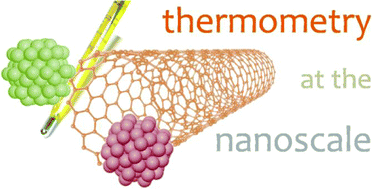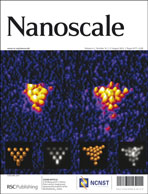Non-invasive precise thermometers working at the nanoscale with high spatial resolution, where the conventional methods are ineffective, have emerged over the last couple of years as a very active field of research. This has been strongly stimulated by the numerous challenging requests arising from nanotechnology and biomedicine. This critical review offers a general overview of recent examples of luminescent and non-luminescent thermometers working at nanometric scale. Luminescent thermometers encompass organic dyes, QDs and Ln3+ions as thermal probes, as well as more complex thermometric systems formed by polymer and organic–inorganic hybrid matrices encapsulating these emitting centres. Non-luminescent thermometers comprise of scanning thermal microscopy, nanolithography thermometry, carbon nanotube thermometry and biomaterials thermometry. Emphasis has been put on ratiometric examples reporting spatial resolution lower than 1 micron, as, for instance, intracellular thermometers based on organic dyes, thermoresponsive polymers, mesoporous silica NPs, QDs, and Ln3+-based up-converting NPs and β-diketonate complexes. Finally, we discuss the challenges and opportunities in the development for highly sensitive ratiometric thermometers operating at the physiological temperature range with submicron spatial resolution.

You have access to this article
 Please wait while we load your content...
Something went wrong. Try again?
Please wait while we load your content...
Something went wrong. Try again?


 Please wait while we load your content...
Please wait while we load your content...